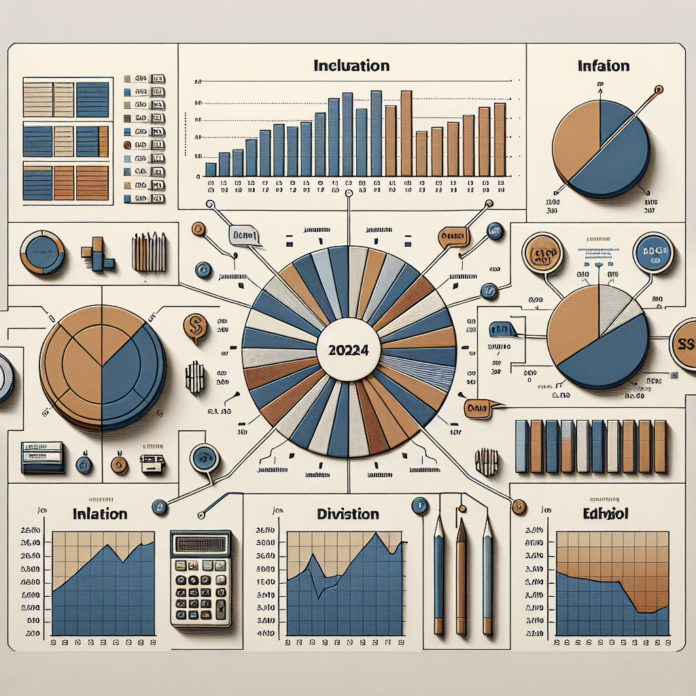Inflation is a critical barometer of economic health, influencing everything from consumer purchasing power to monetary policy. As we assess the first month of the year, understanding the inflation dynamics for January 2024 can help businesses, policymakers, and consumers navigate the economic landscape. This blog post dissects the nuances of the January inflation report, encapsulated in an easy-to-understand chart to visualize where the pressures are stemming from.
The Overall Picture: January’s Inflation Rate
To kick off, our chart begins with a snapshot of the overall inflation rate. January 2024 saw a rate that might signal the economy’s trend for the upcoming months. We compare this rate to historical data to provide a context of our current economic situation. It’s important to note whether the trend is moving toward a more subdued inflation environment or if pressures continue to build, indicating a possible need for more aggressive policy responses.
Food and Beverages: A Closer Look
One of the most sensitive sectors for consumers is the cost of food and beverages. Our chart breaks down this category to show how staples, dining out, and various types of groceries have contributed to the overall inflation figure. We analyze trends within the subcategories, understanding that fluctuations in food prices often have immediate effects on household budgets and can be a precursor to broader inflationary trends.
Housing and Utilities: The Cost of Keeping a Roof Overhead
Shelter costs remain a critical component of inflation calculations. The chart delves into the nuances of the housing market, including rent prices, home values, and utility expenses. Housing inflation can be particularly persistent and impactful, as it affects a significant portion of consumers’ monthly spending. By dissecting this data, we provide insights into one of the most weighty components of the inflation index.
Transportation: Navigating Through Price Changes
Transportation costs often mirror shifts in energy prices and can provide insights into broader economic activities. Our analysis includes the costs of personal vehicles, public transportation, and airfares. Additionally, we consider the price of gasoline and how it relates to geopolitical events, seasonal changes, and policy decisions. This section of the chart clarifies how mobility expenses are playing into the overall inflationary picture for January.
Healthcare and Education: Essential Services Analysis
The costs associated with healthcare and education are key to long-term economic well-being. In this section, we dissect the inflation in medical care services, pharmaceutical products, and educational expenses. These areas impact broad segments of the population and can have far-reaching effects on economic health. The chart addresses these costs and their contribution to the overall inflation rate.
Recreation, Apparel, and Miscellaneous Goods and Services
Inflation is not just about necessities; it also touches on the prices of discretionary goods and services. We review how costs for entertainment, clothing, and various other goods and services are trending. These areas can indicate consumer confidence and discretionary spending power, as individuals are more likely to spend in these categories when they feel secure in their financial situation.
Conclusion: Understanding the Impacts
In conclusion, our comprehensive chart for January 2024’s inflation breakdown attempts to provide clarity within a complex economic reality. It is essential for stakeholders to understand the multifaceted nature of inflation to make informed decisions. Stay tuned for our monthly inflation analysis and check the accompanying chart to see which sectors are affecting your financial world the most.
Inflation reports can often seem dense and inaccessible, but by breaking down the data into digestible sections, we aim to empower you with the understanding necessary to navigate the economy effectively. Use this chart as a guide through the ever-changing landscape of prices and policies in 2024.




 AGF-B.CO
AGF-B.CO